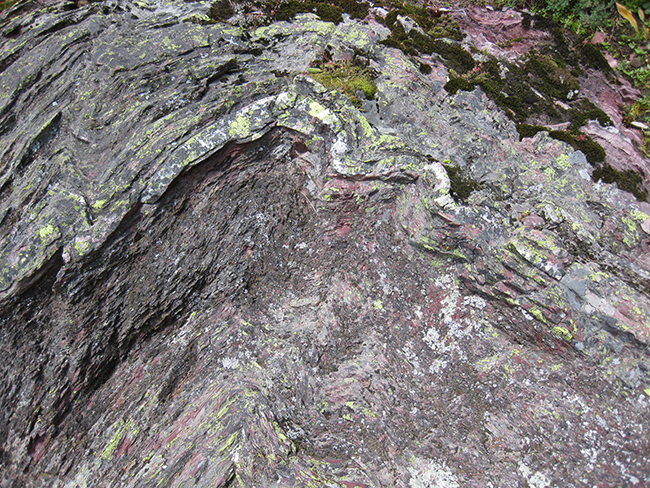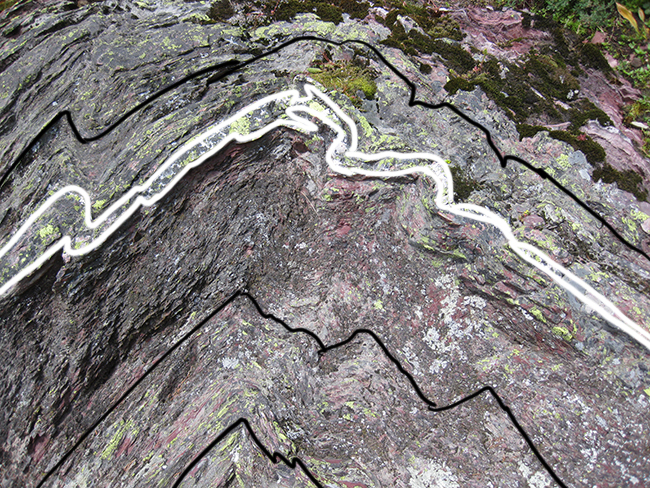Red argillite (Grinnell Formation?) and white quartzite strata from Glacier National Park, Montana. Heavily adorned with lichens…

With bedding traced out…

Happy Friday to you!
Red argillite (Grinnell Formation?) and white quartzite strata from Glacier National Park, Montana. Heavily adorned with lichens…

With bedding traced out…

Happy Friday to you!
I like the sedimentary deposition. It takes less energy to put clay in suspension than quartz grains. I wonder what caused the change in deposition. Coarse lighter sand can be suspended in superstorm surges and tsunamis and deposited in layers distinctively different from the usual. Do you consider storm surge deposition on marsh mud a good possibility?
I also like the compressional folding.
The depositional setting of the Belt / Purcell Supergroup is a subject of some controversy. The red-colored Grinnell Formation is generally interpreted as some of the shallowest-water facies, however.
Shallowest water facies is a clue to deposition. I wonder what contained the shallow water. How could testing reveal if it had a salt content? Were there any records of forms of life having been present? It seems that the usual deposition of mud was interrupted by a higher energy suspension of quartz sand grains. It is interesting that this was quartz for quartzite, not feldspar, mafic minerals, garnet, zircon, sapphire, or magnetite, chromite, ilmenite, and other heavy minerals. Maybe weathering, erosional source, and transport favored the quartz. That reminds me of beach and dune sand put into suspension and deposited upon the mud. Is there an indication of the climate for the source of the argillite and quartz sand as well as the body of water it was deposited in?
Basic questions are: What caused the higher energy that suspended the sand grains, where did they came from, and how far did they move?
Hi Donna,
There are plenty of indications of saltiness! The halite casts are a big clue in that direction. Three examples from this blog:
https://blogs.agu.org/mountainbeltway/2011/08/17/halite-casts-from-belt-argillite/
https://blogs.agu.org/mountainbeltway/2011/08/22/negative-halite-molds-from-belt-argillite/
https://blogs.agu.org/mountainbeltway/2012/07/23/salt-casts-from-purcell-belt-supergroup-rocks-waterton-national-park/
Yes, life was present. The carbonate strata include many profoundly large stromatolites.
As for the energy change, it could have been a dozen things: a storm, an avulsing stream pouring into the basin, a submarine avalanche, etc.
Where did they come from? Some studies of provenance of the Belt Supergroup suggest three different continents as potential sources. North America, obviously, is one. Siberia and (West???) Antarctica are the others, as I recall. I’m not an expert, though, so I’d advise you to search the literature for a more informed response!